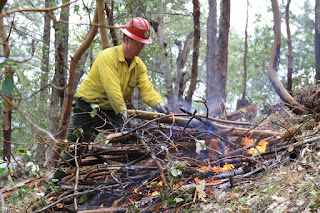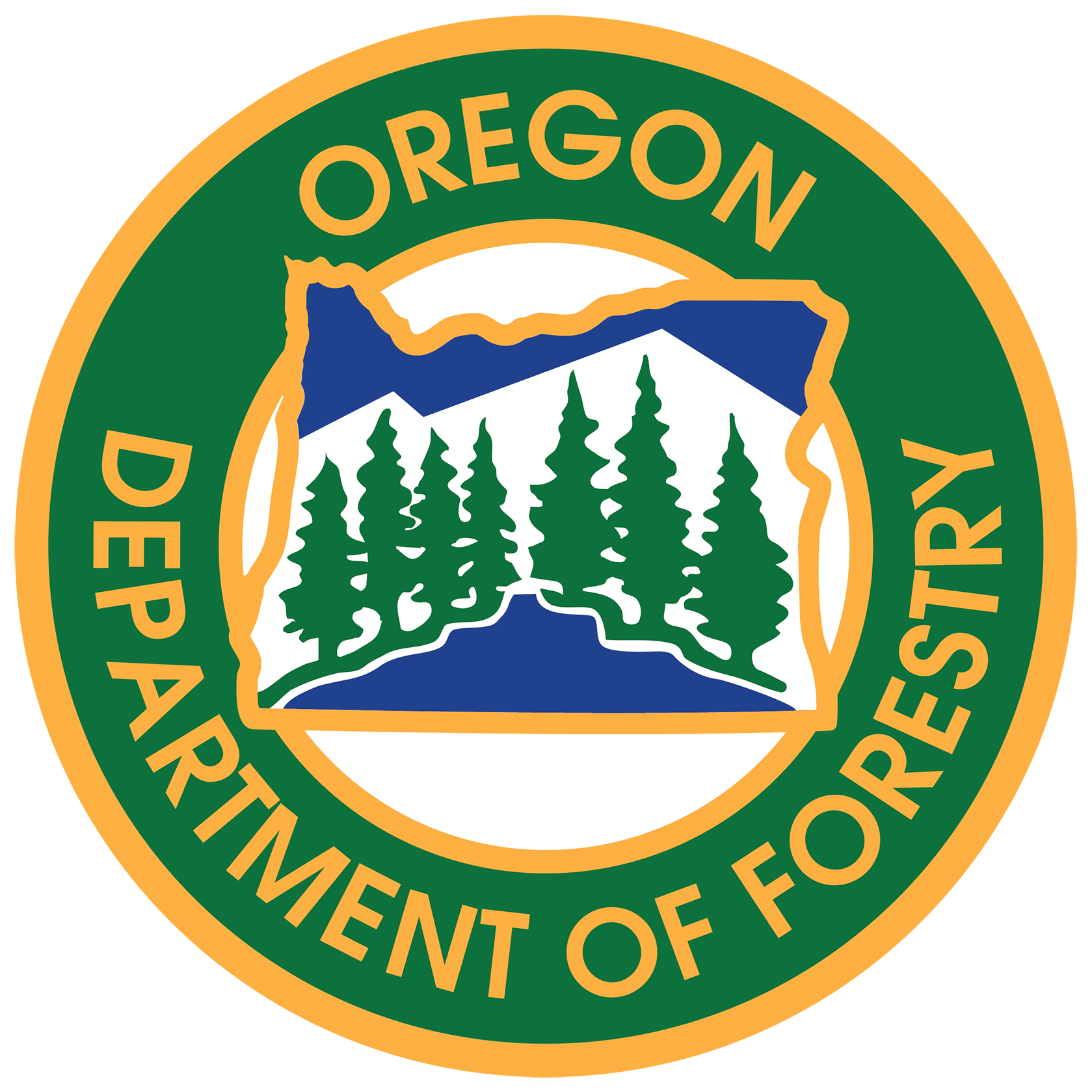While the above average rainfall has led to a lower fire risk the past month, it has also led to an abundance of grass and brush. Despite the unusually wet winter and extended spring, temperatures have already begun to increase and all the grass and brush has begun to dry out enough to raise the risk for wildfires.
ODF Southwest Oregon District is urging residents to take advantage of this time to prepare for #wildfires by creating a 100 foot zone of defensible space around their homes. However, people need to take caution when working with fire to rid of excess debris.
“Last year’s wildfires once again highlighted how important it is for homeowners to prepare their homes to survive a wildfire,” said Lee Winslow, Assistant District Forester, “However, warmer temperatures and curing grasses often increase the risk of burn piles escaping.”
Debris burning is the number one human-caused wildfire, with many fires taking place in the late spring and early fall. State law requires the proper clearing, building, attending and extinguishing of open fires any time of year. A first-time citation carries a $110 fine. If your debris burn spreads out of control, you are responsible for the cost of fire suppression and very likely the damage to neighboring properties. This can range from a few hundred to thousands of dollars.
A burn pile is less likely to escape if these simple safety tips are followed:
• Seek alternatives to burning, such as chipping or recycling the debris.
• If you decide to burn the material, call your structural fire department to see if a burning permit is required.
• Call your county’s air quality office to find out whether debris burning is allowed that day. The number in Jackson County is (541) 776-7007; in Josephine County call (541) 476-9663.
• Know the weather forecast and avoid burning on dry, windy days.
• Construct the burn pile in an isolated area so the flames will not spread to adjacent vegetation. Make sure there are no overhanging branches or powerlines above the pile.
• Dig or scrape down to mineral soil to form a fire line around the burn pile.
• Keep the burn pile small. A small pile is easier to control than a large one. A small pile of 4×4 feet is recommended. You can add additional debris as existing material is consumed.
• Have a shovel and water at the burn pile site. If the site can be reached with a garden hose, make sure the hose extends at least 25 feet beyond the pile’s location.
• Never use gasoline or other accelerants to start or increase your open fire. Every year, 10 to 15 percent of all burn injuries treated at the Oregon Burn Center in Portland are the result of backyard debris burning.
• Burn only yard debris. State regulations prohibit the open burning of any material that creates dense smoke or noxious odors.
 • Stay with the fire until it is completely out. Monitoring a debris burn continually from start to finish is required by state law to ensure that any escaped sparks or embers can be extinguished quickly. Check and recheck your burn pile to guarantee it is dead out.
• Stay with the fire until it is completely out. Monitoring a debris burn continually from start to finish is required by state law to ensure that any escaped sparks or embers can be extinguished quickly. Check and recheck your burn pile to guarantee it is dead out.
• Seek alternatives to burning, such as chipping or recycling the debris.
• If you decide to burn the material, call your structural fire department to see if a burning permit is required.
• Call your county’s air quality office to find out whether debris burning is allowed that day. The number in Jackson County is (541) 776-7007; in Josephine County call (541) 476-9663.
• Know the weather forecast and avoid burning on dry, windy days.
• Construct the burn pile in an isolated area so the flames will not spread to adjacent vegetation. Make sure there are no overhanging branches or powerlines above the pile.
• Dig or scrape down to mineral soil to form a fire line around the burn pile.
• Keep the burn pile small. A small pile is easier to control than a large one. A small pile of 4×4 feet is recommended. You can add additional debris as existing material is consumed.
• Have a shovel and water at the burn pile site. If the site can be reached with a garden hose, make sure the hose extends at least 25 feet beyond the pile’s location.
• Never use gasoline or other accelerants to start or increase your open fire. Every year, 10 to 15 percent of all burn injuries treated at the Oregon Burn Center in Portland are the result of backyard debris burning.
• Burn only yard debris. State regulations prohibit the open burning of any material that creates dense smoke or noxious odors.
 • Stay with the fire until it is completely out. Monitoring a debris burn continually from start to finish is required by state law to ensure that any escaped sparks or embers can be extinguished quickly. Check and recheck your burn pile to guarantee it is dead out.
• Stay with the fire until it is completely out. Monitoring a debris burn continually from start to finish is required by state law to ensure that any escaped sparks or embers can be extinguished quickly. Check and recheck your burn pile to guarantee it is dead out.In addition to burning excess debris, the following tips should be considered when planning your homes’ safety against a wildfire:
• Remove all flammable vegetation 30 feet from all structures.
• Space trees and plants away from each other at least 100 feet from all structures.
• Clear all needles and leaves from roofs, eaves and rain gutters.
• Trim branches six feet from the ground.
• Use trimming, mowing and power equipment before 10 a.m. and after 6 p.m., not in the heat of the day and not during extremely dry and windy days.
• Landscape with fire resistant plants.
• Use fire ignition resistant building materials.
• Remove all flammable vegetation 30 feet from all structures.
• Space trees and plants away from each other at least 100 feet from all structures.
• Clear all needles and leaves from roofs, eaves and rain gutters.
• Trim branches six feet from the ground.
• Use trimming, mowing and power equipment before 10 a.m. and after 6 p.m., not in the heat of the day and not during extremely dry and windy days.
• Landscape with fire resistant plants.
• Use fire ignition resistant building materials.
Remember #DefensibleSpace is your responsibility.
